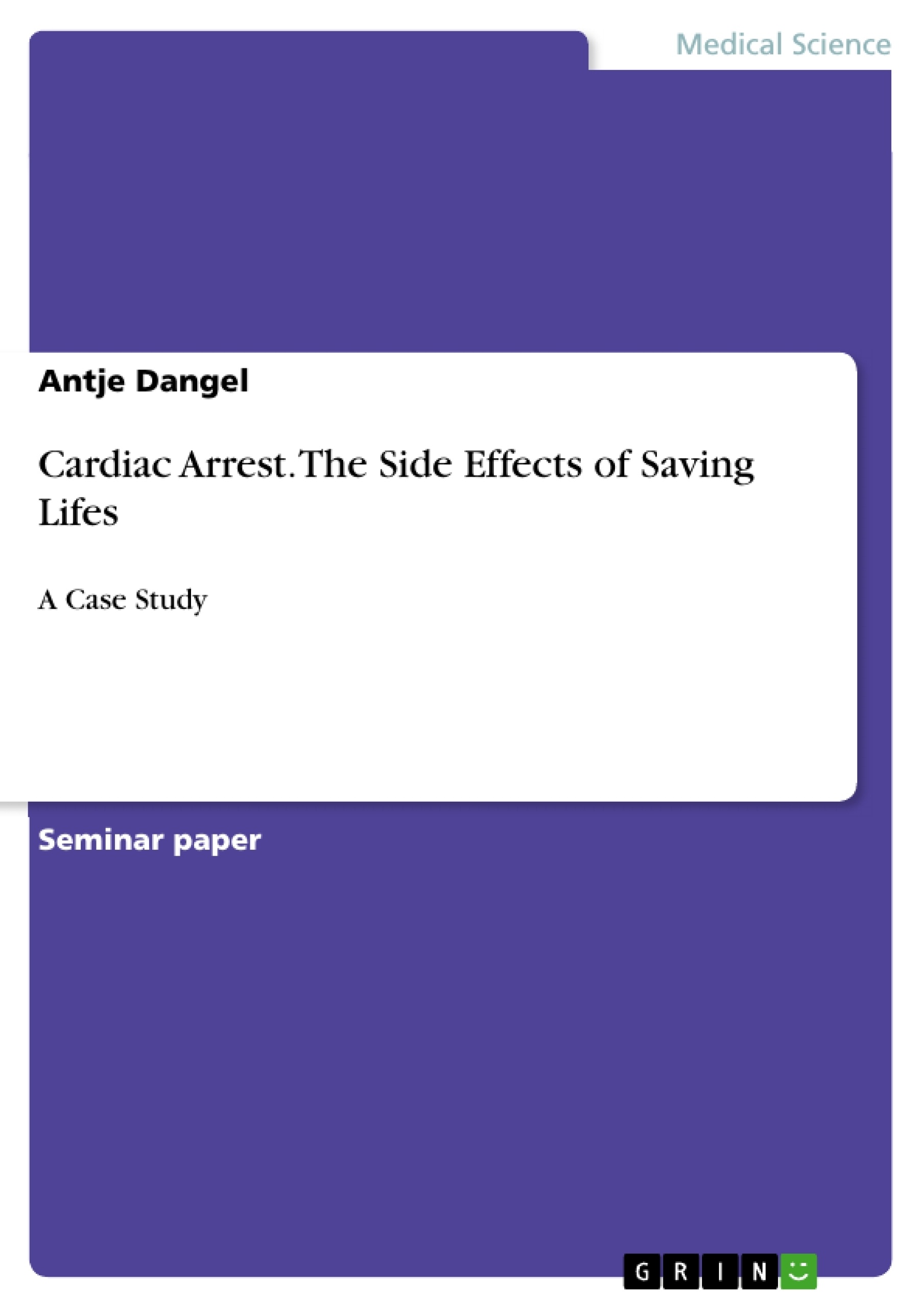Excerpt
Table of Contents
Introduction
ACLS Guidelines
Clinical Pharmacology of Emergency Drugs
Vasopressin versus Epinephrine - Amiodarone versus Lidocaine
Pharmacodynamics
Adverse Reactions
Disease Interaction According to the FDA
Drug-Drug Interactions
Review of Literature
Consideration of Other Commonly Prescribed Cardiac Drugs
Conclusion
References
Introduction
Currently, heart disease remains the leading cause of death while cardiac arrest is one of the most devastating conditions patients and their families have to face. Despite all efforts to explain management of cardiac arrest and implementation of advanced cardiovascular life support (ACLS), survival rates post cardiac arrest remains at 23.9 % in adults and 40.2% in children (AHA, 2012). Nurses undergo extensive ACLS training every two years. While algorithms, administration of emergency drugs, and procedures seem to be followed appropriately, rationales of the latter are often not well understood. In this paper pharmacokinetics and pharmacodynamics, adverse effects of ACLS drugs, drug-drug interactions of intervention drugs, and anticipated long-term adverse effects post cardiac arrest will be discussed. In the case study of JG, the patient went into cardiac arrest on the way to the hospital and he was pronounced after a full code had been performed for three hours. The cause of his cardiac arrest in regards to heart rhythm is unclear and no medical history is available.
ACLS Guidelines
ACLS guidelines, developed by the American Heart Association (AHA) recommend cardiopulmonary resuscitation (CPR) and defibrillation for cardiac arrest secondary to ventricular fibrillation (VF) or ventricular tachycardia (VT). Additionally, pharmacological treatment consists of administering intravenous (IV) vasopressors and anti-arrhythmic drugs (AHA, 2010). Pharmacological management of asystole includes epinephrine administration every 3-5 minutes; the first or second dose of epinephrine may be substituted with vasopressin.
Clinical Pharmacology of Emergency Drugs
Emergency drugs have no contraindications as they are intended to prevent premature death; however, as most drugs, emergency drugs react systemically and adverse reactions and possible long-term consequences need to be considered. The following section addresses the pharmacodynamics and pharmacokinetics as well as adverse reactions and disease interactions of epinephrine, vasopressin, amiodarone, and lidocaine.
Vasopressin versus Epinephrine - Amiodarone versus Lidocaine
Pharmacodynamics
Epinephrine, a sympathomimetic catecholamine acting on both alpha and beta-adrenergic receptors, benefits patients during cardiac arrest due to its receptor stimulating properties (FDA, n.d.). Epinephrine’s alpha-adrenergic effects lead to systemic vasoconstriction, and subsequently to increased myocardial and cerebral blood flow (AHA, 2000). Epinephrine has a rapid onset and short duration of action with a half-life of 2 minutes (Food and Drug Administration [FDA], n.d.).
Vasopressin, a noradrenergic polypeptide antidiuretic hormone that causes contraction of vascular and other smooth muscles, benefits patients in cardiac arrest due to stimulation of V1 and V2 receptors. Stimulation of V1 receptors leads to peripheral, coronary, and renal vasoconstriction, while stimulation of V2 receptors leads to vasodilation, and subsequent reduction of end-organ hypoperfusion. Vasopressin also leads to increased cerebral blood flow by vasodilation. It is suspected that vasopressin administration during cardiac arrest leads to decreased incidences of long-term neurological damage (Wenzel, 2004). Vasopressin increases systemic vascular resistance and mean arterial pressure, therefore decreases heart rate and cardiac workload (FDA, n.d.). Onset and peak are rapid and half-life is 10-20 minutes.
Amiodarone, a class III antiarrhythmic, benefits patients in cardiac arrest by blocking calcium, sodium and potassium channels, which slows conduction and prolongs refractoriness of the atrioventricular (AV) node. Amiodarone has vasodilatory effects triggering sympathetic activity, which lead to decreased cardiac workload and subsequent decreased myocardial oxygen consumption. Amiodarone has, in comparison with lidocaine, very little negative inotropic activity. IV amiodarone has a rapid onset, half-life in blood plasma is relatively short, exact time is unknown (Giardina & Passman, 2014).
Lidocaine, a class Ib antiarrhythmic drug, benefits patients in cardiac arrest by decreasing depolarization and automaticity of ventricular cells and by increasing ventricular fibrillation threshold. Onset of IV lidocaine is immediate and half-life is 10 minutes (Karch, 2012).
Adverse Reactions
According to the FDA, all ACLS drugs have adverse effects that affect almost all body systems. Most problematic adverse effects include those that affect the cardiovascular and renal system. This is especially true with amiodarone; however, no long-term studies analyzing side effects of short term administration of IV amiodarone exist.
Disease Interaction According to the FDA
Epinephrine should be used with caution and may precipitate underlying heart conditions in patients who have heart disease to include arrhythmias, coronary artery or organic heart disease, or cerebrovascular disease. The use of vasopressin in patients with impaired cardiac response may worsen cardiac output. The use of amiodarone is cautioned when patients present with preexisting conditions including cardiac conduction deficits, pulmonary disease, liver disease, renal impairment, and thyroid disease. Lastly, lidocaine can cause significant problems if severe liver or renal disease, hypovolemia, shock, or heart blocks exists (FDA, n.d.).
[...]
- Quote paper
- Antje Dangel (Author), 2014, Cardiac Arrest. The Side Effects of Saving Lifes, Munich, GRIN Verlag, https://www.grin.com/document/303791
Publish now - it's free






















Comments